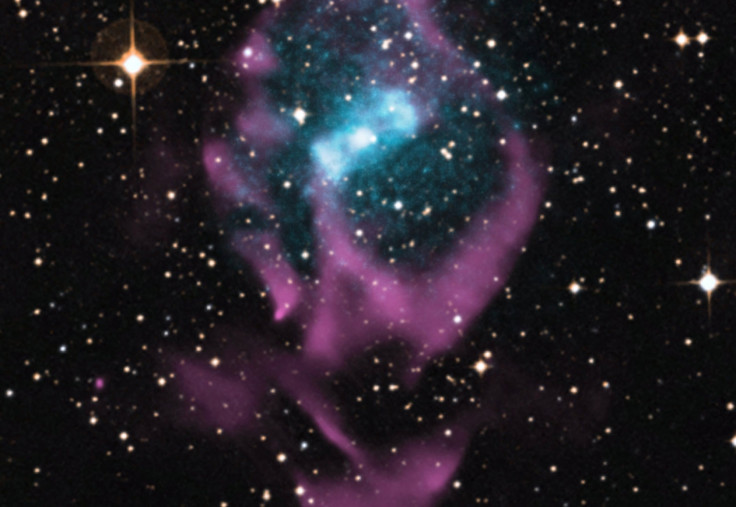Remnants Of Supernova Blast Help Researchers Find Youngest X-Ray Binary Star System

Using data from NASA’s Chandra X-ray Observatory and the Australia Compact Telescope Array, researchers have managed to spot faint remnants of a supernova explosion helping them find the youngest known X-ray binary.
A team of researchers, led by Sebastian Heinz of the University of Wisconsin-Madison, have discovered that the X-ray binary in question, known as Circinus X-1, is less than 4,600 years old, making it the youngest X-ray binary system ever seen. The discovery is expected to help astronomers unearth mysteries about the formation of neutron stars and supernovas, as well as the effect of the supernova's explosion on a nearby companion star.
“X-ray binaries provide us with opportunities to study matter under extreme conditions that would be impossible to recreate in a laboratory,” Heinz said in a statement. “For the first time, we can study a newly minted neutron star in an X-ray binary system.”
According to scientists, X-ray binaries are star systems that consist of two parts -- a compact stellar remnant, which can be either a neutron star or a black hole, and a companion star. As they orbit one another, the neutron star or black hole pulls in gas from the companion star, which heats the gas to millions of degrees, producing intense X-ray radiation.
Initially, due to the extreme brightness of the neutron star, researchers found it difficult to determine the age of Circinus X-1 by examining the material around the orbiting stars. But recently, the scientists managed to observe the star in a very faint state, allowing them to detect the X-rays from the supernova shock wave that plowed through the surrounding interstellar gas.
“Since the supernova was triggered by the formation of the neutron star, our limit on the age of the supernova remnant also limits the age of the neutron star in Circinus X-1,” Robert Fender of the University of Oxford in the U.K. and a co-author of the study published in The Astrophysical Journal on Wednesday, said in the statement.
The latest discovery, coupled with previous observations, has also helped astronomers to propose two new theories about neutron stars. One being that a neutron star can be born with a weak magnetic field and the second theory proposes that a neutron star can quickly become de-magnetized as it pulls material from its companion star onto itself.
According to scientists, neither conclusion was expected from existing theories of neutron star evolution. In the Milky Way galaxy, the only other established X-ray binary within a supernova remnant is SS 433, which is between 10,000 and 100,000 years old.
© Copyright IBTimes 2025. All rights reserved.






















